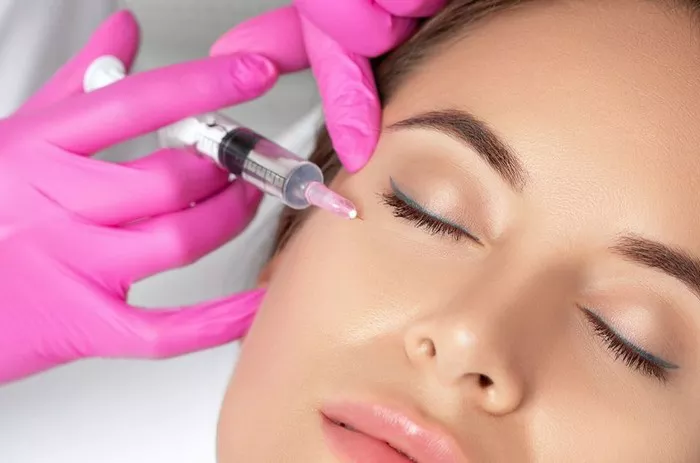The lip filler market is poised for significant growth over the next decade, fueled by an increasing consumer appetite for cosmetic enhancements and non-invasive procedures. A recent report by Future Market Insights, Inc. forecasts that the market will expand from USD 518.3 million in 2024 to USD 738.2 million by 2034, reflecting a compound annual growth rate (CAGR) of 3.6% throughout the forecast period.
Understanding the Lip Filler Market
A surge in awareness surrounding lip enhancement techniques is driving the expansion of the global lip filler market, particularly in emerging economies. Many individuals are choosing lip fillers to enhance their facial features, attracted by the minimal downtime and lower risks associated with these procedures.
The rise of social media and the influence of celebrities have further normalized lip enhancement, boosting consumer confidence in undergoing such treatments. Innovations in dermal fillers that prioritize safety and efficacy are also contributing to market growth.
As non-surgical treatments gain popularity, the lip filler market holds considerable potential, especially as advancements in formulations promise longer-lasting results with reduced side effects.
Country-wise Insights and Market Growth
According to the report, the growth of the lip filler market varies by region, with projected CAGRs as follows:
United States: 3.1%
Germany: 3.3%
China: 4.5%
India: 3.2%
Australia: 2.9%
Key Takeaways from Market Study
Steady Market Growth: The global lip filler market is projected to grow at a CAGR of 3.6% from 2024 to 2034.
Market Size Increase: The market is expected to rise from USD 518.3 million in 2024 to USD 738.2 million by 2034.
Emerging Markets: Increased demand from emerging economies, particularly in the Asia-Pacific and Latin America regions, will contribute to market expansion.
Technology and Innovation: Advancements in lip filler formulations ensure longer-lasting effects with minimal side effects, creating new market opportunities.
Sabyasachi Ghosh, Associate Vice President at Future Market Insights, Inc., stated, “The growing demand for lip augmentation procedures reflects broader trends in beauty standards, driven largely by the influence of social media and celebrity culture. Fuller lips are increasingly seen as a symbol of youth and attractiveness, significantly boosting the demand for lip fillers.”
Drivers and Opportunities
The demand for lip fillers is significantly influenced by the growing acceptance of aesthetic procedures across diverse demographics. Evolving beauty standards and a heightened interest in maintaining a youthful appearance are pivotal growth drivers. The introduction of innovative lip filler technologies and formulations, which offer longer-lasting results and natural-looking enhancements, opens new market opportunities.
Additionally, the growth of the beauty and cosmetic industry in emerging markets, along with rising disposable incomes, is expected to further strengthen the market. Technological advancements in medical aesthetics, including improved safety profiles and enhanced formulations, present lucrative opportunities for industry players.
Component Insights
The lip filler market comprises various components, including hyaluronic acid fillers, synthetic fillers, and collagen fillers. Among these, hyaluronic acid-based fillers dominate due to their superior safety profile and reversible nature, making them the preferred choice for both consumers and professionals. While collagen-based fillers are gaining traction for their volumizing effects and ability to stimulate natural collagen production, hyaluronic acid remains the favored option due to its biocompatibility and ease of application.
Key Growth Determinants and Trends
The lip filler market is primarily driven by an increasing desire for non-invasive cosmetic enhancements. Significant growth trends include:
The growing influence of social media and beauty influencers, which has mainstreamed lip enhancement procedures.
The proliferation of new product launches and technological advancements in lip filler solutions, fostering a conducive environment for market growth.
With younger demographics seeking cosmetic enhancements and older consumers pursuing non-surgical anti-aging solutions, the market’s potential is expansive. Additionally, the development of fillers that promise enhanced durability and reduced adverse effects presents new opportunities for manufacturers.
Growth Drivers
Increasing Consumer Awareness: Growing awareness about the benefits of non-invasive procedures is driving the demand for lip fillers.
Technological Innovations: Advances in filler technology that deliver natural-looking results with minimal side effects significantly contribute to market growth.
Social Media Influence: The impact of social media platforms and beauty influencers is fostering the mainstream acceptance of cosmetic treatments.
Rising Disposable Income: With increasing disposable incomes, particularly in emerging markets, consumers are more inclined to invest in aesthetic enhancements.
Competitive Landscape
The lip augmentation market is highly competitive, with industry leaders such as Allergan, Galderma, and Merz Pharma dominating the space. These companies maintain their market positions by investing in research and development, expanding their global reach, and pursuing strategic acquisitions to enhance their product offerings.
Smaller companies tend to focus on niche areas or specialized formulations, aiming to carve out their market share. Key areas of competition include pricing strategies, marketing initiatives, and distribution networks. In this tightly regulated industry, compliance with safety standards is critical for companies to maintain their reputation and competitive edge.
Key Development
In February 2022, Allergan Aesthetics received FDA approval for JUVEDERM VOLUMA XC, a hyaluronic acid-based filler designed for lip augmentation, reinforcing their product line and market presence.
Conclusion
The lip filler market is set for notable growth, driven by evolving beauty standards, technological advancements, and increased consumer awareness of non-invasive cosmetic procedures. As the market continues to expand, industry players are poised to capitalize on emerging opportunities, solidifying their presence in this dynamic landscape.
You Might Be Interested In:

